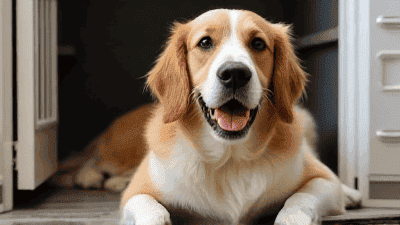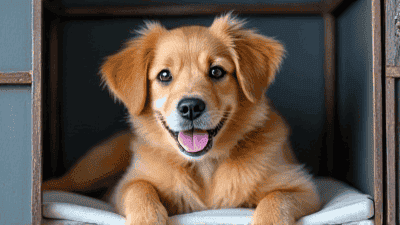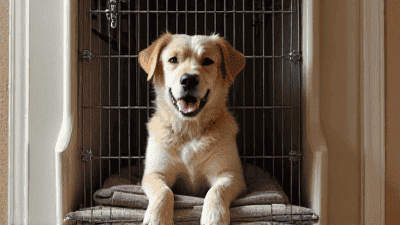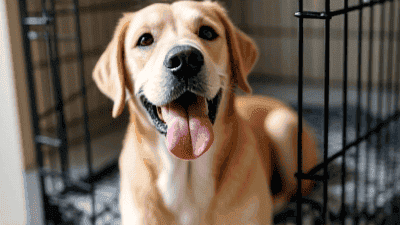
Crate training is one of the most effective tools for pet owners to ensure the safety, comfort, and well-being of their furry companions. When done correctly, a crate becomes a secure and cozy retreat for your pet, providing them with a space they can call their own. However, crate training can be challenging if not approached with patience and care.
A crate serves as a secure and comfortable environment where your pet can relax and feel safe. It mimics the den-like atmosphere that many animals instinctively seek.
Crate training is an effective way to teach puppies bladder control and reduce accidents indoors. Dogs naturally avoid soiling their sleeping area, making the crate a useful tool for housebreaking.
A crate provides a safe way to transport your pet in a car or during air travel, reducing the risk of injury in case of sudden stops or accidents.
When left unsupervised, some pets may chew on furniture, dig, or engage in other destructive behaviors. A crate prevents these issues by providing a confined space where your pet can stay when you’re not home.
For pets recovering from surgery or illness, a crate offers a quiet and secure place to rest and heal.

The crate should be large enough for your pet to stand, turn around, and lie down comfortably. However, it shouldn’t be so large that your pet can use one area for sleeping and another for eliminating.
Add soft bedding, a favorite toy, and a water dish to make the crate inviting. Avoid using items that your pet could chew and swallow.
Place the crate in a common area where your pet spends time. Leave the door open and allow them to explore it at their own pace. Encourage curiosity by placing treats or toys inside.
Associate the crate with positive experiences by feeding your pet near the crate or tossing treats inside. Gradually move their food bowl into the crate to encourage them to enter willingly.
Start with short periods of time in the crate while you’re home. Close the door for a few minutes and stay nearby, offering praise and treats for calm behavior.
As your pet becomes more comfortable, gradually increase the duration of crate sessions. Step away for short periods and return to reward calm behavior.
Once your pet is comfortable spending time in the crate during the day, begin using it at night. Place the crate near your bed to provide reassurance during the initial stages.
Practice leaving your pet in the crate while you’re out of the house. Start with short absences and gradually increase the time as your pet becomes more confident.

If your pet whines or barks in the crate, avoid letting them out immediately. Wait for a moment of quiet before opening the door to reinforce calm behavior.
Some pets may initially be afraid of the crate. Use high-value treats, toys, and positive reinforcement to build a positive association. Never force your pet into the crate.
If your pet has an accident in the crate, clean it thoroughly and avoid scolding. Ensure the crate is the appropriate size and that your pet has regular bathroom breaks.
Pets with separation anxiety may struggle with crate training. Gradually acclimate them to being alone and consider using calming aids, such as pheromone diffusers or calming music.
Place an item with your scent, such as a piece of clothing, in the crate to provide comfort and reassurance.
Establish a consistent schedule for crate use, including feeding, playtime, and bathroom breaks. Pets thrive on routine and predictability.
A crate should not be used as a punishment or for extended periods. Limit crate time to a few hours at a time, except during overnight sleep.
Leave puzzle toys or chew treats in the crate to keep your pet entertained and prevent boredom.
Always reward your pet for calm and quiet behavior in the crate. Positive reinforcement is key to successful crate training.

Puppies adapt quickly to crate training, but they require more frequent bathroom breaks. Start with short sessions and gradually increase the duration as they grow.
Adult dogs may take longer to adjust to a crate, especially if they’re not used to confinement. Use patience and positive reinforcement to help them feel comfortable.
Cats can also benefit from crate training, especially for travel or vet visits. Introduce the crate slowly and make it a cozy space with soft bedding and familiar scents.
Rabbits, guinea pigs, and other small animals can be crate-trained using similar techniques. Ensure the crate is the appropriate size and provide plenty of enrichment.
Regularly clean the crate to ensure it remains a comfortable and hygienic space for your pet.
Replace worn bedding or toys to keep the crate inviting and engaging.
Pay attention to your pet’s behavior in the crate. If they seem stressed or unhappy, reassess your approach and make adjustments as needed.
Crate training is a valuable tool for pet owners, offering a safe and comfortable space for your pet to relax, rest, and feel secure. By following the steps and tips outlined in this guide, you can help your pet learn to love their crate and see it as their personal sanctuary. Remember, patience, consistency, and positive reinforcement are key to successful crate training. With time and effort, your pet will come to view their crate as a safe and happy place, making life easier and more enjoyable for both of you.